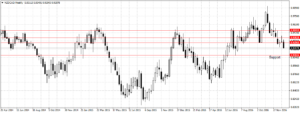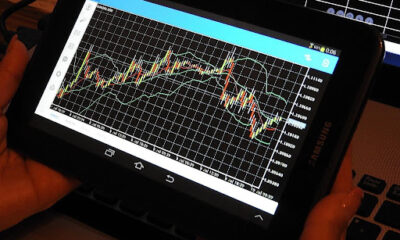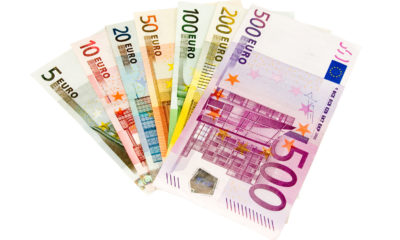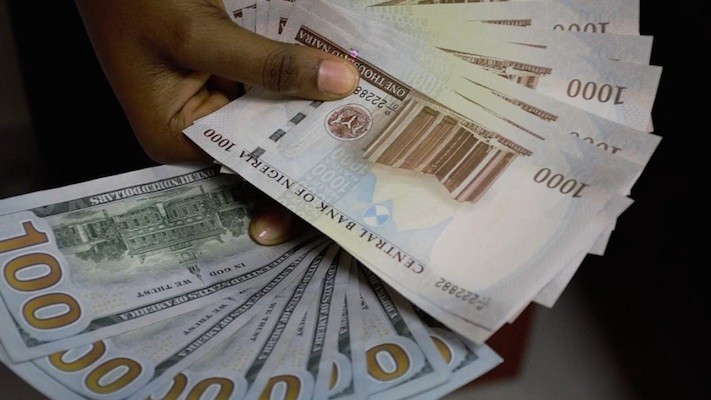- Forex Weekly Outlook January 9-13
The U.S dollar rebounded last week after job data showed the economy added just 156,000 jobs in December. Even though, this was lower than 175,000 jobs expected, wages rose 2.9 percent year-on-year. Signaling the labor market is reaching full employment.
However, with the unemployment rate rising 0.1 percent to 4.7 percent from 4.6 percent recorded in November, and wages reaching a 7-year high, experts believe worker shortages may become more frequent in 2017 and force businesses to raise wages even more in order to hire skilled workers.
This is expected to boost consumer spending and pressure costs, therefore, underscoring case for the Federal Reserve to raise rates at least 3 times in 2017.
While, in Canada, oil production cut continued to aid the economy and strengthen the position of the loonie. Bolstering trade balance to 26-month high in December, from a deficit of 1.0 billion. The unemployment rate ticked up to 6.9 percent from 6.8 percent, but a total of 53,700 jobs was created.
Although, the Bank of Canada Governor Stephen Poloz has stressed that there is still plenty of slack in the job market, a few experts have said that considering the fact that the U.S. is Canada’s biggest trading partner, that proposed Trump economic plan will boost job creation in Canada and further help revamp the economy after years of low oil prices.
In China, the People’s Bank of China raised the yuan exchange rate against the U.S dollar by 0.92 percent, making it the biggest one-day increase in more than 11 years. But the currency quickly slumped 0.5 percent after Goldman Sachs Group Inc. and other analysts called on clients to bet against the yuan, citing past scenarios, that the best time to bet against the yuan is after interventions that flushed out bearish positions and argued that intermittent intervention won’t work with Trump presidency, which is expected to cancel TTP deal, hence, they expect the yuan to trade above the 7.1 a dollar in 2017. This week, NZDCAD and EURCAD top my list
NZDCAD
In December, I mentioned the sell opportunity of this pair, since then it has dropped 339 pips to trade at 5-month low. This week, I will treat the evening star formed as the continuation of the bearish trend started in November.

Click to enlarge
Fundamentally, the Canadian economy is growing and will likely get better going forward, especially with the renewed economic growth in the US and oil production cut by the OPEC. This is projected to aid the Canadian dollar against the New Zealand dollar that currently depends on the struggling Chinese economic performance to function.
Therefore, I will be looking to sell NZDCAD for a 0.9084 target this week as long as 0.9298 resistance holds.
EURCAD
In early December, I mentioned the failure of the ECB’s quantitative easing program to boost inflation rate and help job creation in the manufacturing sector due to weak oversea orders. Since then, this pair has gained 539 pips before retracing below 1.4070 resistance after OPEC successful consensus in December.

Click to enlarge
But with the Euro-area enmeshed in low inflation rate, weak manufacturing sector and uncertainty surrounding Brexit. I expect this pair to continue its bearish move following gravestone doji formed three weeks ago and a bearish candlestick that opened and closed below 1.4070 resistance.
So this week, I will be looking to sell this pair for 1.3742 targets as long as 1.4070 resistance holds.

 Billionaire Watch3 weeks ago
Billionaire Watch3 weeks ago
 Startups4 weeks ago
Startups4 weeks ago
 News4 weeks ago
News4 weeks ago
 News4 weeks ago
News4 weeks ago
 Bitcoin4 weeks ago
Bitcoin4 weeks ago
 Naira4 weeks ago
Naira4 weeks ago
 Forex3 weeks ago
Forex3 weeks ago
 Treasury Bills4 weeks ago
Treasury Bills4 weeks ago




























